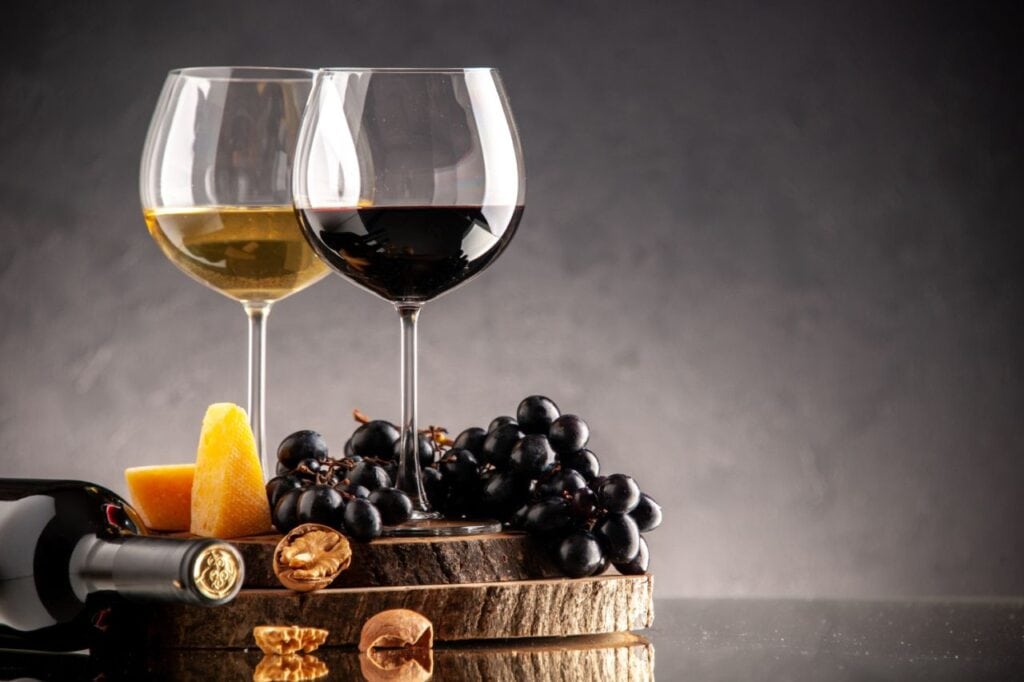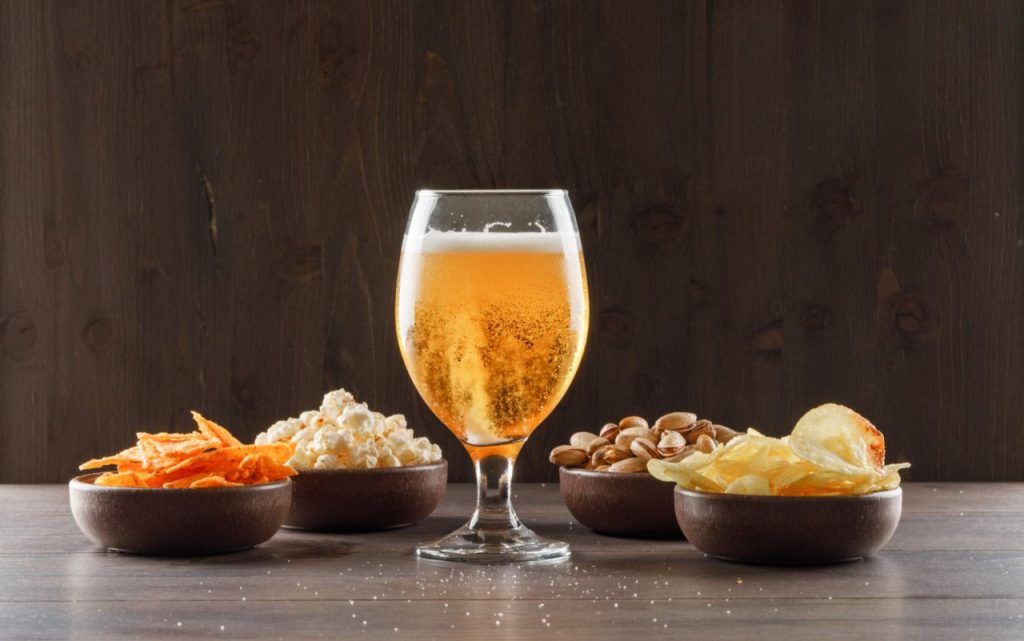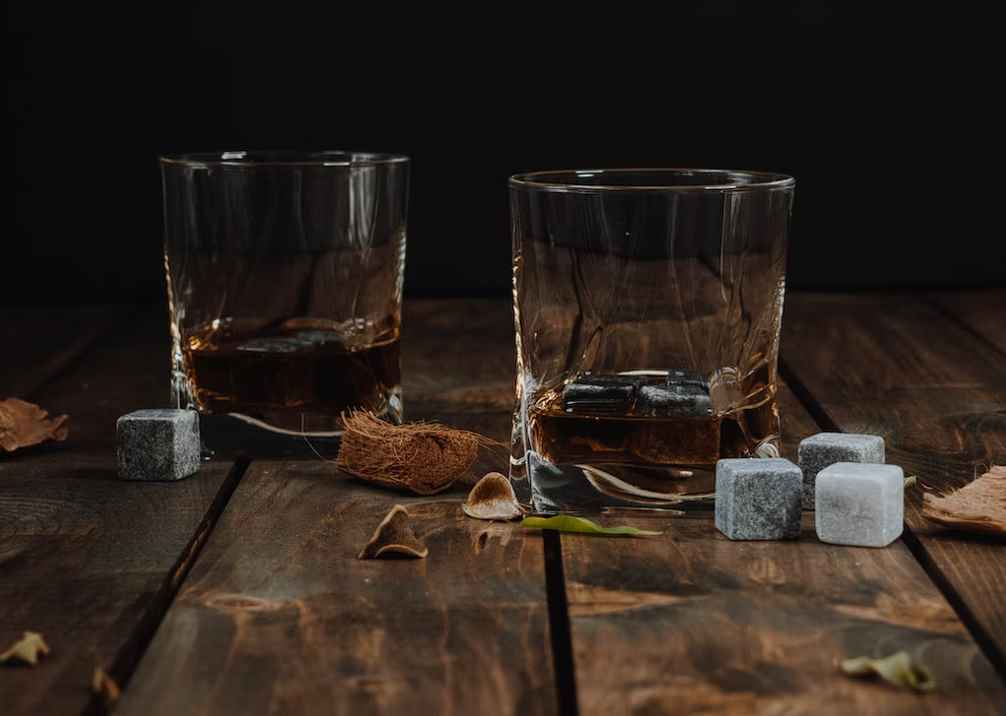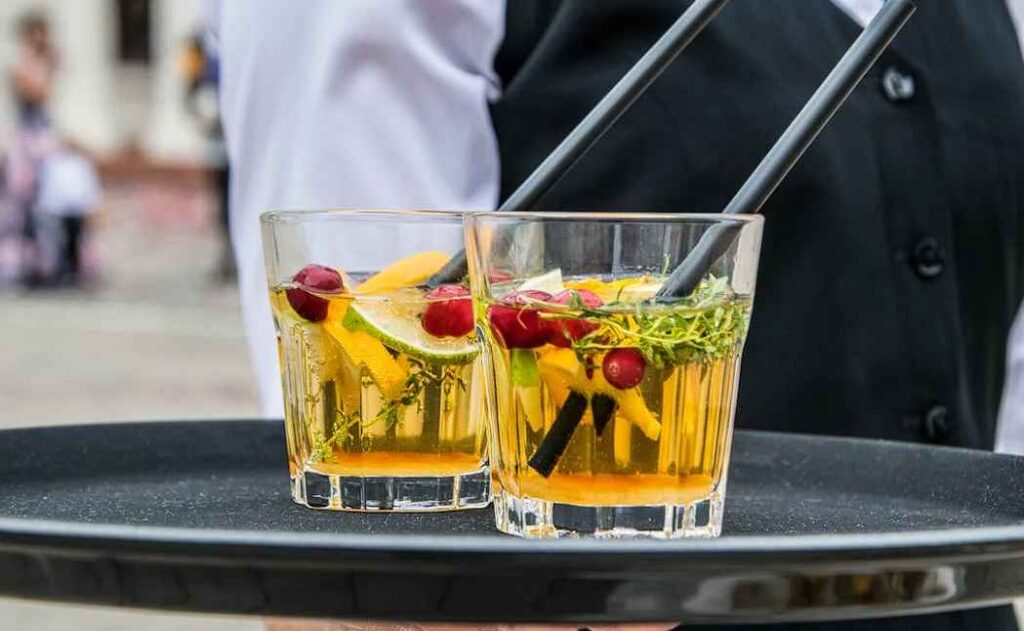Since you're a wine enthusiast, you've probably given some thought to the possibility of learning how to distil wine in your own house at some point. It's a daunting process, but with the right instructions, it's doable. This blog post will walk you through the steps of distilling wine so you can create your own homemade wine spirits!
Distilling wine at home is not as difficult as you might think. All you need is a few supplies and a bit of patience. The first step is to gather your supplies. You will need a water heater, glass or stainless steel pot, food-grade hose, a funnel, and a glass or plastic container. Next, set up your distilling apparatus.
This can be done by attaching the hose to the water heater and running it into the pot. Then, place the funnel on top of the container. Finally, turn on the water heater and wait for the wine to start flowing into the pot. Once the wine has reached boiling point, it will start to vaporise. The vapours will then travel through the hose and condense into the container. After a few hours, you should have around two quarts of pure distilled wine.
What Is Distilled From Wine?
Distilling wine is the process of heating wine to its boiling point and then condensing the vapours to produce a concentrated alcohol solution. This process can create a variety of distilled spirits, such as brandy, whisky, and vodka. To distil wine, you will need a still, a type of apparatus specifically designed for distillation.
The first step is to heat the wine until it reaches its boiling point. As the vapours rise, they will be directed into the still. The vapours will then be cooled and condensed into a liquid form. The final product will be a concentrated alcohol solution that contains more alcohol than the original wine.
Check Local Regulations For Distilling Wine
If you're interested in making your wine at home, it's important to check your local regulations before you get started. Many jurisdictions have laws prohibiting the distillation of alcohol without a licence, so it's important to be aware of the rules in your area.
In addition, even if you are allowed to distil wine at home, there may be restrictions on the amount of wine you can produce or the way in which you can sell it. For example, some jurisdictions require that homemade wine be sold only at farmers' markets or direct to consumers rather than through retail outlets. So before you start brewing up a batch of your vino, check local regulations to avoid any trouble down the road.
Dispose Of The Dangerous Distillate
Disposing the distillate from wine-making can be tricky, as it is a hazardous material. The easiest and safest way to dispose of it is to contact your local waste management company. They will be able to arrange for the distillate to be picked up and disposed of properly. If you cannot contact your local waste management company, you can also take the distillate to a hazardous waste disposal facility.
These facilities are designed to handle hazardous materials, and they will dispose of the distillate safely. Finally, if you cannot dispose of the distillate, you can always contact a professional wine-making company. They will often have the necessary equipment and training to dispose of the distillate for you safely.
Figure Out Your End Product & Collect Ingredients (Distilling Wine)
The key to distilling wine is knowing what kind of end product you want to create. This will determine what kind of still you need to use and how to modify the wine. Once you know what you want, it's time to collect the ingredients.
The most important ingredient, of course, is wine. You'll also need yeast, water, and a sugar source like honey or fruit juice. The type of yeast you use will contribute to the final product's flavour, so choose carefully. Once you have all your ingredients, it's time to get started.

Port And Other Fortified Wines
Port and other fortified wines are distilled wines that have been fortified with brandy. Fortified wines were originally developed as a way to preserve wine, but they have since become popular for their distinct flavour profile. Port is the most well-known type of fortified wine, but there are other varieties, including sherry, Madeira, and Marsala.
Fortified wines are typically sweeter than dry ones and often have higher alcohol content. As a result, they are typically served in small glasses and enjoyed after a meal. When shopping for fortified wines, paying attention to the labelling is important. "Dry" fortified wines contain less than 4 grams of sugar per litre, while "sweet" fortified wines contain more than 4 grams of sugar per litre. "Medium" fortified wines fall somewhere in between. Deter fortified wines are generally best served with desserts, while drier varieties pair well with cheese or nuts.
Brandy
Brandy is a type of distilled wine. To make brandy, wine is first fermented and then distilled. The finished product is typically between 40% and 60% alcohol by volume. Brandy is often aged in oak barrels, giving it a distinct flavour. Sometimes, it may also be flavoured with fruit or other ingredients. Brandy is a popular ingredient in cocktails and can also be enjoyed on its own.
When choosing a brandy, it's important to consider the style and age. Younger brandies are typically lighter in flavour, while older brandies are often more full-bodied. If you're not sure which type of brandy to choose, ask a knowledgeable salesperson for assistance.
Set Up Your Wine Still
Before you begin distilling wine, it's important to set up your still properly. This will ensure that the process goes smoothly and that you end up with a high-quality product. Here are a few tips to help you get started:
- Choose the right vessel. The vessel you use for distillation should be either stainless steel or glass. Avoid using anything made of copper, as this can impart a metallic flavour to the final product.
- Clean and sterilise your equipment. All of your distillation equipment should be clean and sterilised before use. This will help to prevent the growth of bacteria or other contaminants.
- Choose the right wine. When selecting a wine for distillation, it's important to choose something high in sugar. Otherwise, the final product will be too low in alcohol content.
- Set up your still according to the manufacturer's instructions. Be sure to follow the instructions included with your still to assemble it correctly.
- Distil your wine according to recipe instructions. Once you have everything set up, you're ready to start distilling your wine! Follow the recipe instructions carefully to ensure that the process goes smoothly and that you end.
Heat The Wine
Wine can be distilled to create a stronger alcoholic beverage. This process involves heating the wine until it evaporates and condensing the vapour into liquid form. Distilling wine can increase the alcohol content by as much as 50%.
There are a few things to keep in mind when distilling wine:
- It is important to use a clean still. Any dirt or residue in the still can impart off-flavours to the final product.
- The wine must be heated slowly. If it is heated too quickly, the flavours will be driven off, and the final distilled spirit will be harsh.
- It is important to monitor the temperature carefully.
The ideal temperature for distilling wine is between 160 and 170 degrees Fahrenheit. With these tips in mind, distilling wine at home can be a fun and rewarding experience. However, be cautious and follow all safety guidelines when using heat and alcohol.
Home Winemaking: The Distillation Process
Setting Up The Still
Before you can distil wine, you need to set up your still. First, clean your still thoroughly with hot water and mild detergent. Next, fill the still with water and place it on the heat source. If you're using a gas stove, set the flame to medium-high; if you're using an electric stove, set it to high. Now, add your wine to the still.
The amount of wine you use will depend on the size of your still. Once the wine begins to boil, reduce the heat to maintain a gentle simmer. As the wine simmers, it will produce a wine vapour that will rise through the tube and into the condenser. The condenser will cool the vapour, causing it to condense back into liquid form. This liquid is your distilled wine.
Need A Still
Copper alembic pots are ubiquitous pieces of equipment used in distilleries of all sizes, from home-scale operations to large-scale industrial operations. Alembic pots are utilised in the fermentation and distillation processes of alcohol.
They are available in a variety of sizes, but the alternatives for 1 litre and 2 litres are the ones that present the fewest challenges when it comes to working with them while home distilling. They are the ones that present the fewest challenges when it comes to working with them while home distilling. They can be purchased at a variety of different retail locations. It is strongly suggested that you make any and all purchases of alembic pots on the internet whenever that option is available to you.
Place A Glass In Front Of The Spout
Fill the bucket with water rather than the still, and then pour the water into the bucket. If there is any hope of effectively re-condensing the wine after it has been evaporated, it is extremely vital to cool the water that will be used in the process. This is definitely necessary.
A spout should be attached to the side of the bucket so that it can function as an exit point for the condenser tube, which should be positioned inside the bucket. This should be done using appropriate fasteners. As long as the tube is inserted into the bucket's spout in the correct manner, there should be no water leaking from the bucket. To put it another way, the bucket does not let water in.
Place The Still Inside The Pot
It is imperative that the size of the pot be sufficient to accommodate both the alcoholic beverage and the water at the same time. Due to their ability to house a still of a volume equal to two litres, Dutch ovens are an excellent option for carrying out this task.
Put Water Into The Saucepan Until It Reaches The Level Of The 3 Mark
It is imperative that the water coming from the faucet of the sink be transferred into the Dutch oven. Be careful not to overfill it since this could result in it leaking out at a later time. If you do, it will be a mess. If you overfill it, though, there is a possibility that it will seep out later.
Add Cold Water To The Condenser
The great majority of condensers are available for purchase with a variety of spouts that come in a number of different dimensions. To get started, a tap is fastened to the spout, and then the spout is tilted in the direction of drainage so that it points downward. This results in the formation of a drainage angle. After that, connect the first tube to the section of the spout that is facing upward. Next, insert one end of the second tube into the sink while leaving the other end protruding from the aperture. Finally, connect the third tube to the portion of the spout that is facing downward.
If you do not have the essential components, you might be able to create a condenser coil by utilising copper tubing and a bucket if you do not have any other options. If you do not have any other options, you do not have any other choices. You would be in a position where you had no choice but to go with this course of action if there were no other possibilities open to you.
Wine Should Be Added To A Still Until It Is About 3 Full
Instead of pouring the wine into the Dutch oven, the wine should be put into the still. If the vessel is filled any farther than this point, the wine will boil to the surface when it still is heated. If the still is empty, the wine will not boil. You will encounter this consequence if you proceed to bring the level of liquid inside the vessel up to this stage.
Connect The Pot To The Condenser By Means Of A Tube
To get started put the cover on the still and position it so that it is perched on top of the apparatus. The condenser is the portion of the arm that protrudes from the top of the lid and is commonly referred to as the protrusion.
This portion of the arm extends from the top of the lid in the closed position. It comes with everything you require to get going, including a spout to which the copper tubing can be connected, and it also has everything else you require. It is all included in the package.
The opposite end of the tube needs to be positioned so that it can be placed into a spout that is situated in a bucket that is kept separate from the others. When you buy a still, each of these components will normally already be connected to the still in some manner, if it in any way at all.
Heating The Wine
To distil wine, the first step is to heat the wine to boiling. This can be done in a number of ways, but the most common method is to use a distillation flask. Next, the wine is placed in the distillation flask and heated over a Bunsen burner.
Once the wine has reached boiling, the burner is turned off, and the distillation process can begin. It is important to ensure that the wine remains at a consistent temperature during distillation, as this will help ensure that the final product is of high quality. Once the distillation process is complete, the distilled wine can be stored in an airtight container for future use.
Increase The Temperature Until A Trace Of Alcohol Can Be Seen Trickling Down
Always make sure that you are keeping a vigilant awareness of them while they are still by taking extra precautions wherever necessary. If the temperature of the water continued to rise, it would eventually boil, which would result in the distillation reaching the glass in a shorter amount of time. This would be the case if the temperature of the water continued to climb.
If the temperature was to keep climbing, then things would turn out like this. As soon as you notice that it has begun to leak, you will need to make the required adjustments to the temperature in order to prevent it from continuing. This may be done as soon as you notice that it has begun to drip.
- When the rate at which the drip is provided is sped up, there is a corresponding reduction in the total amount of alcohol that is collected in each drip. The rate at which the liquid is gathered is referred to as the drip rate, and as you get more skilled with distillation, you will be given the ability to customise it. The speed at which the liquid is gathered will correlate to this.
- Never use an open flame. The utilisation of an electric burner is the option that is both the most dependable and risk-free choice when activities related to distillation are being carried out inside of a structure. When you are cooking outside, you have the option of using a stove that is powered by either propane or natural gas as its source of fuel.
Conduct Quality Assurance Checks On The Spirit, And Keep Replacing The Bottles
Make it a habit to check in on this page on a frequent basis so that you can monitor the progress of your brandy and make any necessary adjustments. You will want to make sure that you have a supply of fresh bottles on hand in the event that something goes wrong. It does not make a difference whether you choose to smell or taste the brandy; either way, you will be able to tell that its quality has improved as it has aged. This is a process that happens on its own when the proof of the brandy drops, so you will be able to tell that its quality has improved as it has aged.
The Temperature Needs To Be Lowered In Order To Keep The Distillation Process Going
You want the water to be roughly 170 degrees Fahrenheit, and that should be your target temperature. If you have access to a thermometer, one method for precisely determining the temperature is to insert the instrument into the spout of the condenser and read the measurement. If you do not have access to a thermometer, another method for precisely determining the temperature is to use a thermocouple. The use of a thermocouple is an alternative approach to accurately determining the temperature that can be taken in the event that you do not have access to a thermometer.
You need to maintain a close eye on the rate at which the decline is going in order to accurately measure the temperature. When the distillate falls between one and three times in the span of a single second, your still's temperature has reached its ideal level and is operating at its most efficient level.
Keep The Spirit That Smells Like Fruit Alive
After the head has been removed, the next phase in the process is to extract the drinking alcohol. This step is also referred to as "the heart of the process," and it takes place after the head has been extracted. You will be able to recognise it after you have allowed the scent of your own nose to come into contact with it. It is going to have a scent that is reminiscent of the many various fruits and herbs that were used in the process of making the wine, and that aroma is going to be very pleasant. This will lend the wine a scent that is both fruity and herbal.
It is possible that the elevated temperature that is currently present within the still is forcing the liquid that is currently housed within it to flow out a little bit more quickly than it would normally do at this particular time. Collect the liquid into a number of glasses that are on the smaller side, and then refill the glasses once they are full of the liquid.
Throw Away The Liquid Since It Is Beginning To Lose Its Colour
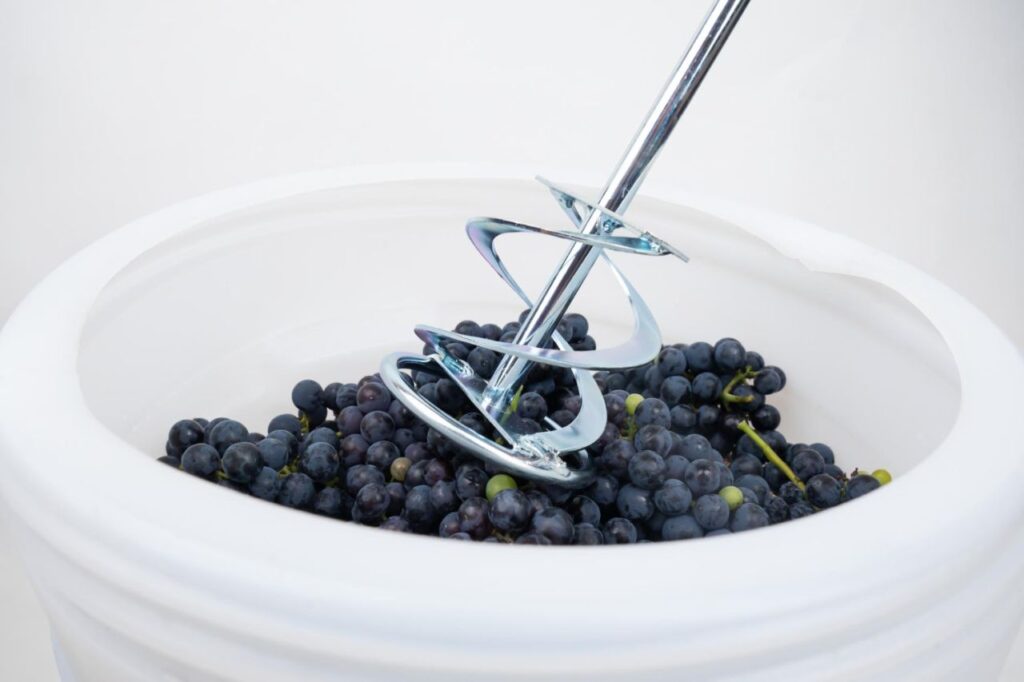
Following the passage of a predetermined amount of time, the distillate will take on the look of milk. It was indicated earlier in the conversation that there was a fruity odour, so use your sense of smell to analyse the situation and see if you can determine the origin of the smell.
After that aroma has been eliminated, the brandy is next diluted with water and a wide variety of different kinds of alcohol, all of which have a putrid odour. This process takes place after the aroma has been eliminated. This component, which is also known as the tail, must be thrown away once its function has been fulfilled because there is no longer a requirement for it to be present.
Discard Any Distillate That Has A Putrid Odour
It is strongly recommended that you do not consume the first fifty millilitres of the product at any time. It not only has a high concentration of wood alcohol, but it also has a high percentage of acetone, and both of these substances, when present in sufficient amounts, give off an odour that may be described as putrid. This liquid might be referred to as either the head or the foreshot, depending on which name was chosen as the prefered moniker. Pour it out.
Cleaning The Still
The process of distilling wine into brandy begins with a wine that has undergone the initial fermentation process. When fermenting has been completed, the wine is transferred to a distillation tank, where it will go through a second fermentation process. Yeast is introduced to the wine at this point so that it can ferment the grape juice into alcohol as it consumes the sugars in the wine.
Once the second fermentation is complete, the tank is sealed, and the mixture is allowed to settle. After a few days, the sediment at the bottom of the tank is removed, and the liquid is transferred to another container for storage. If you are planning on ageing your brandy, removing as much sediment as possible during this step is important to avoid off-flavours in the final product.
Put An End To The Fire
When moving onto the next stage, you have to be certain that the flame that was previously present on your burner has been fully extinguished. Only then may you proceed with the next step. It will be some time before the temperature returns to that of the average room in the house.
You need to give top priority to storing the brandy in a cabinet or cellar that is entirely dark and has a temperature that is significantly lower than room temperature as a temporary solution. You should do this as soon as possible.
Clean The Still With Some Liquid Soap And Water
The one and only thing that needs to be done is deodorising the still with regular dish soap, which is the sole requirement. The still should be placed in the sink, and the water from the sink should be used to do the cleaning. This is the most effective method.
After that, all you need to get rid of any leftover stains is a gentle sponge and some good old-fashioned elbow grease. In addition, the condenser should be cleaned if it is required to be done so.
Taking Out The Still And Emptying Out The Water Bath
After the cooking procedure is done, it is of the utmost importance to make certain that there is still some water remaining in the Dutch oven. First, handle it with care as you move it over to the sink, and once you are there, carefully empty the contents of the container into the sink after you have reached your destination.
After giving it ten to fifteen minutes to settle after you have stirred it up, the temperature will drop to a point where it is simpler to maintain the desired level at the desired time. The most significant possibility is that a pricey piece of cookware will be knocked to the ground, which would then result in its being damaged. It is vital that you do not put yourself in harm's way by taking any chances with this risk.
Vinegar And Salt Can Be Used To Remove Green Stains
Because patination is a natural process, copper containers that are never used will ultimately develop a green patina on the exterior of the vessel. This will happen because patination is green in colour. Next, after putting a quarter of a cup of vinegar into the still, one tablespoon of salt is going to be added to the mixture that has been created in the still.
The process will end here, with this stage being completed. At this stage of the process, it is necessary to perform the step of rinsing the still with water once more so that the method can be finished. Polishing the metal with a sponge will return its appearance to how it was when it was first obtained. This will allow you to use the metal more effectively.
Detach The Condenser And The Lid From The Still
Since the condenser coil is built of tubing, it may be readily removed by applying only a minimal amount of force. This is possible due to the fact that tubing is the material that it is composed of. This is due to the fact that the tubing is used to construct the condenser coil. It will be necessary to disassemble this in order to gain access to the top of the still. When you remove the opposite end of the condenser coil from the bucket of cold water and subsequently pour the water from the opposite end of the coil, you must therefore exercise extreme caution.
Conclusion
If you want to learn how to distil wine at home, we can help. Our easy-to-follow guide will take you through all of the steps necessary to produce your very own distilled wine. And it’s not as hard as you might think! With a little practice, you could be churning out batches of delicious homemade liquor in no time. Ready to get started? Check out our guide for everything you need to know about distilling wine at home.
Content Summary
- How To Distil Wine At Home? Since you`re a wine enthusiast, you`ve probably given some thought to the possibility of learning how to distil wine in your own house at some point.
- In this blog post, we`ll walk you through the steps of distilling wine so you can create your own homemade wine spirits! Distilling wine at home is not as difficult as you might think.
- You will need a water heater, glass or stainless steel pot, food-grade hose, a funnel, and a glass or plastic container.
- Once the wine has reached boiling point, it will start to vaporise.
- The vapours will then travel through the hose and condense into the container.
- Distilling wine is the process of heating wine to its boiling point and then condensing the vapours to produce a concentrated alcohol solution.
- To distil wine, you will need a still, a type of apparatus specifically designed for distillation.
- The first step is to heat the wine until it reaches its boiling point. The final product will be a concentrated alcohol solution that contains more alcohol than the original wine.
- Check Local Regulations For Distilling Wine If you`re interested in making your wine at home, and it's important to check your local regulations before you get started.
- Many jurisdictions have laws prohibiting the distillation of alcohol without a licence, so it's important to be aware of the rules in your area.
- If you cannot contact your local waste management company, you can also take the distillate to a hazardous waste disposal facility.
- These facilities are designed to handle hazardous materials, and they will dispose of the distillate safely.
- Figure Out Your End Product & Collect Ingredients (Distilling Wine) The key to distilling wine is knowing what kind of end product you want to create.
- The type of yeast you use will contribute to the final product`s flavour, so choose carefully.
- Fortified wines were originally developed as a way to preserve wine, but they have since become popular for their distinct flavour profile.
- Port is the most well-known type of fortified wine, but there are other varieties, including sherry, Madeira, and Marsala.
- To make brandy, wine is first fermented and then distilled.
- Brandy is a popular ingredient in cocktails and can also be enjoyed on its own.
- When choosing a brandy, it's important to consider the style and age.
- Set Up Your Wine Still Before you begin distilling wine, it's important to set up your still properly.
FAQs About Distillery
Can You Distil Wine At Home?
If you've ever wondered if you can distil wine at home, the answer is yes! However, there are a few things you need to keep in mind in order to do it safely and effectively. First, it's important to use a completely clean and uncontaminated distilling setup.
This means using distilled water for your cuts and starting with wine that has been properly clarified and stabilised. You'll also need to be careful about the proof of your final distillate - if it's too high, it can be dangerous. Finally, make sure you follow all local regulations regarding home distillation. With these tips, you can easily distil your wine at home.
What Is Distillation Used To Produce?
Distillation is the process of purifying liquids by heating them to their boiling point and then condensing the resulting vapour. The vapour consists of the purified liquid, while the impurities are left behind in the still. This technique can produce a wide variety of products, including water, ethanol, essential oils, and vodka.
In many cases, distillation is the most effective way to purify a liquid. For example, filtration alone makes it impossible to remove all impurities from water. However, it is possible to produce pure distilled water free of bacteria and other contaminants by distilling the water. As a result, distillation is an important tool for creating safe and potable water supplies.
What Happens During The Distillation Process Of Wine?
The process of distilling wine is both time-consuming and intricate. To produce distilled wine, the vintner must first ferment grape juice into wine. This is the first step in the production process. The wine is then put into a still, heated to the point where it starts to evaporate, and the process is repeated.
After that, the vapour is collected, condensed into a liquid, and then placed in barrels to age for some time. The finished product is a potent, high-proof alcoholic beverage far stronger than regular wine and contains a higher percentage of alcohol overall.
Although the distillation process may appear to be a straightforward one, in reality, it is fairly complicated and calls for a significant amount of experience and knowledge on the part of the winemaker. To produce superior distilled wine, the vintner must have an in-depth knowledge of both the fermentation and the distillation process.
Can Types Of Wine Be Distilled?
All wines can be distilled, but the type of wine that is most commonly distilled is brandy. Brandy is made by distilling wine in a pot still. The wine is heated until it turns into vapour. The vapour is then cooled and condensed back into liquid form.
This process concentrates the alcohol in the wine and its flavour and aroma. Other types of wine that can be distilled include port, sherry, and Madeira. These wines are typically distilled using a column still, which produces a higher-quality product. In addition to brandy, spirits such as whiskey and vodka can also be made by distilling wine.
What Is The End Product Of The Distillation Process?
The distillation process purifies liquids by heating them to their boiling point and capturing the resulting vapour. The vapour is then condensed into a liquid form, typically much purer than the original mixture. The end product of the distillation process is thus a more concentrated and pure form of the original liquid.
This purification method can be used on various substances, including water, alcohol, and essential oils. In addition to its use in laboratories and industrial settings, distillation is also a key step in producing whiskey and other spirits.
If you've ever wondered if you can distil wine at home, the answer is yes! However, there are a few things you need to keep in mind in order to do it safely and effectively. First, it's important to use a completely clean and uncontaminated distilling setup.
This means using distilled water for your cuts and starting with wine that has been properly clarified and stabilised. You'll also need to be careful about the proof of your final distillate - if it's too high, it can be dangerous. Finally, make sure you follow all local regulations regarding home distillation. With these tips, you can easily distil your wine at home.
Distillation is the process of purifying liquids by heating them to their boiling point and then condensing the resulting vapour. The vapour consists of the purified liquid, while the impurities are left behind in the still. This technique can produce a wide variety of products, including water, ethanol, essential oils, and vodka.
In many cases, distillation is the most effective way to purify a liquid. For example, filtration alone makes it impossible to remove all impurities from water. However, it is possible to produce pure distilled water free of bacteria and other contaminants by distilling the water. As a result, distillation is an important tool for creating safe and potable water supplies.
The process of distilling wine is both time-consuming and intricate. To produce distilled wine, the vintner must first ferment grape juice into wine. This is the first step in the production process. The wine is then put into a still, heated to the point where it starts to evaporate, and the process is repeated.
After that, the vapour is collected, condensed into a liquid, and then placed in barrels to age for some time. The finished product is a potent, high-proof alcoholic beverage far stronger than regular wine and contains a higher percentage of alcohol overall.
Although the distillation process may appear to be a straightforward one, in reality, it is fairly complicated and calls for a significant amount of experience and knowledge on the part of the winemaker. To produce superior distilled wine, the vintner must have in-depth knowledge of both fermentation and distillation processes.

